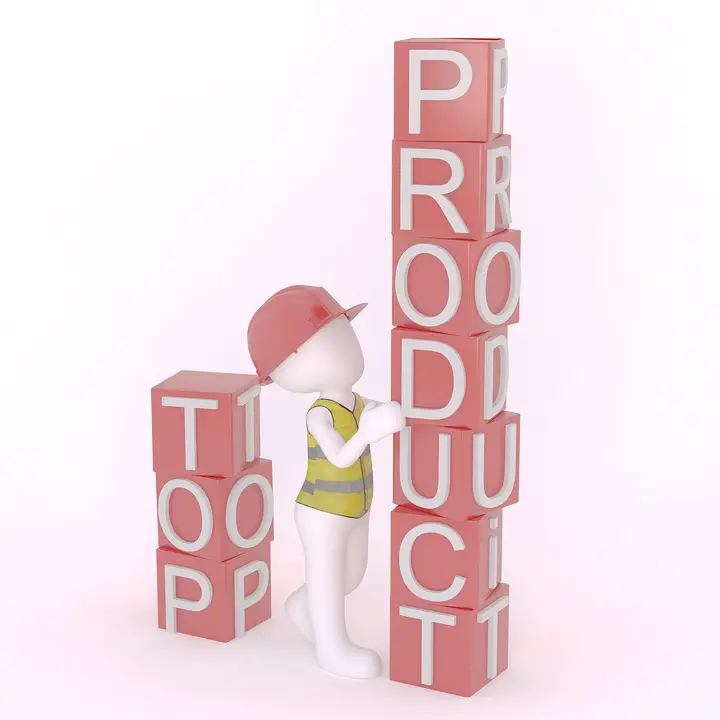Welcome, fellow hustlers! Today, we’re diving into a topic that’s as hot as a freshly brewed cup of fair-trade coffee: the environmental impact of digital products. You know, those shiny e-books, online courses, and all those other pixelated goodies that we’ve been told are the eco-friendly alternative to their physical counterparts. But are they really saving the planet, or are we just trading one set of problems for another? Buckle up, because we’re about to find out if your digital side hustle is a sustainability superstar or just another carbon footprint in disguise.
Digital Products: The Green Dream or Just Greenwashing?
Let’s face it: Digital products have been marketed as the eco-friendly answer to our consumerist prayers. You can buy an e-book instead of a physical copy, save trees, and all that jazz. But before you start patting yourself on the back for being a modern-day environmentalist, let’s dig a little deeper.
The Reality Check:
-
Energy Consumption: While it’s true that e-books don’t require paper, they do require energy to create, distribute, and access. Every time you stream a video or download an app, you’re using energy—lots of it. In fact, data centers that store our beloved digital products consume about 2% of the world’s electricity. That’s enough power to run all the kettles in the UK for a decade. Yeah, think about that the next time you’re binge-watching your favorite series.
- E-Waste: Remember that shiny new tablet you bought last year? It’s probably sitting in a drawer now, collecting dust. The digital revolution has led to a surge in electronic waste (e-waste), which is one of the fastest-growing waste streams globally. And guess what? Most of it ends up in landfills, where it can take hundreds of years to decompose. So, while you’re saving trees with your e-products, you might just be contributing to a digital dump.
The Good, the Bad, and the Profitable
Let’s break it down into bite-sized pieces, shall we? Here’s the good, the bad, and how you can make bank while keeping your conscience clear.
The Good: Digital Products Are Convenient and Scalable
Let’s not throw the baby out with the bathwater. Digital products have some serious advantages:
-
Convenience: You can buy and use them anytime, anywhere. No more waiting for shipping or worrying about stock levels. You can even access them in your pajamas (not that we’re judging).
-
Scalability: If you create a digital product, you can sell it to an unlimited number of customers. That means more money in your pocket without the added costs of manufacturing and shipping physical products. Talk about a win-win!
- Low Overhead: No need for a storefront or physical inventory. You can run your digital empire from your couch with just a laptop and a dream.
The Bad: The Hidden Costs
Now, let’s talk about the elephant in the digital room. There are downsides, and they can be quite hefty:
-
Carbon Footprint: Every time you upload a file, stream a video, or even send an email, you’re using energy. And that energy often comes from non-renewable sources. If you’re serious about sustainability, it’s time to consider your digital carbon footprint.
- E-Waste Generation: As mentioned earlier, the life cycle of digital products can lead to significant electronic waste. Old gadgets sitting in landfills are not just an eyesore; they can also leach toxic chemicals into the environment.
Making Money While Going Green: The Hustler’s Guide
Alright, now let’s get to the good stuff. How can you make money from digital products while being a responsible hustler? Here are some strategies that’ll keep your pockets lined and your conscience clean.
1. Create Sustainable Digital Products
If you’re creating digital products, consider making them sustainable. Here’s how:
-
Eco-Friendly Courses: If you’re an expert in a field, create an online course that teaches others how to be more sustainable in their lives or businesses. People are willing to pay for knowledge that helps them make the world a better place.
- E-Books on Sustainability: Write an e-book about sustainable living, eco-friendly practices, or how to reduce e-waste. Not only will you make money, but you’ll also help educate others.
2. Green Affiliate Marketing
Affiliate marketing is a fantastic way to earn money online, and you can focus on sustainable brands. Here’s how:
-
Promote Eco-Friendly Products: Partner with companies that sell sustainable products. Whether it’s reusable bags, solar chargers, or eco-friendly apps, you can earn a commission while promoting products that are kind to the planet.
- Educate Your Audience: Use your platform to educate your audience about the environmental impact of their purchases. Encourage them to choose sustainable options and share affiliate links to those products.
3. Optimize Your Digital Footprint
To really cash in on the green movement, it’s time to optimize your digital presence:
-
Choose Green Hosting: If you’re running a website, opt for a green hosting provider that uses renewable energy. It might cost a little more upfront, but it’ll pay off in the long run—both for your wallet and the planet.
- Reduce Data Use: Compress images on your website and minimize unnecessary data transfers. Not only does this make your site faster, but it also reduces energy consumption.
4. Educate and Engage
Become a thought leader in sustainable digital practices. Here’s how to engage your audience:
-
Start a Blog or Podcast: Share your journey toward sustainability in the digital space. You’ll attract an audience that values eco-friendly practices, leading to potential monetization opportunities.
- Host Webinars: Teach others about the environmental impact of digital products and how they can make more sustainable choices. Charge a fee for access or offer sponsored content.
The Bottom Line: Is Digital Truly Sustainable?
So, are digital products truly sustainable? The answer is… it depends. They come with their own set of environmental challenges, but they also offer unique opportunities for innovation and profit. As a hustler, it’s your job to navigate these waters wisely.
By focusing on creating and promoting sustainable digital products, you can make a significant impact while fattening your wallet. Remember, every little bit helps—whether it’s reducing your digital footprint, educating your audience, or promoting eco-friendly products.
Now go out there and hustle with purpose! Your bank account and Mother Earth will thank you. 🌍💰






